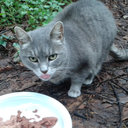Indoor exposure to environmental tobacco smoke and dampness: respiratory symptoms in Sardinian children--DRIAS study.
Słowa kluczowe
Abstrakcyjny
Indoor exposures at home, environmental tobacco smoke (ETS) and mould/dampness adversely affect respiratory health of children. Disturbi Respiratori nell'Infanzia e Ambiente in Sardegna (DRIAS) (Respiratory Symptoms in children and the Environment in Sardegna, Italy) aims at relating the prevalence of respiratory and allergic symptoms to indoor exposures in Sardinian children. DRIAS, a cross-sectional investigation of respiratory symptoms/diseases, used a modified version of ISAAC questionnaire, included 4122 children attending 29 primary schools in the school year 2004-2005. If both parents smoke the prevalence for current wheeze and current asthma is almost doubled in comparison with never smokers, for persistent cough and phlegm a role is suggested when only mother smokes. Among mothers smoking in pregnancy, the prevalence of current wheeze and current asthma is increased. Exposure to ETS and family atopy have a joint effect resulting in an almost tripling of prevalence for current wheeze and more than four times for current asthma. Exposure to "dampness" (mould or dampness) both during the first year of life and currently is associated with increased prevalence of current wheeze, persistent cough or phlegm and current rhino-conjunctivitis; if exposure is only during the first year of life a doubling or more of prevalence is observed for current wheeze, current asthma, and persistent cough or phlegm. DRIAS results add evidence to the causal role of childhood exposure to ETS in the development of respiratory symptoms (cough, phlegm, and wheezing) and asthma. The joint effect of ETS and family atopy is corroborated. The results strengthen the evidence for a causal association between "dampness" and respiratory health, pointing to its possible independent role in causing asthma, a long-lasting exposure entails a doubled prevalence for both asthmatic and bronchitis symptoms.


